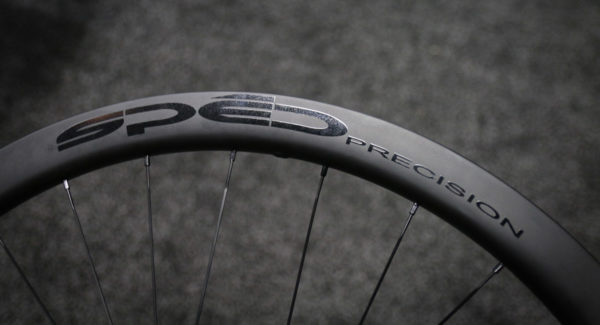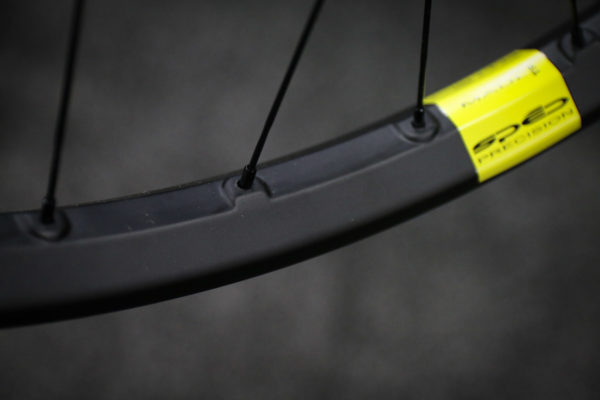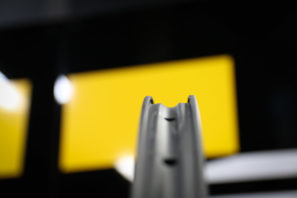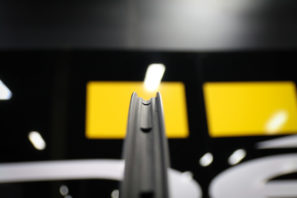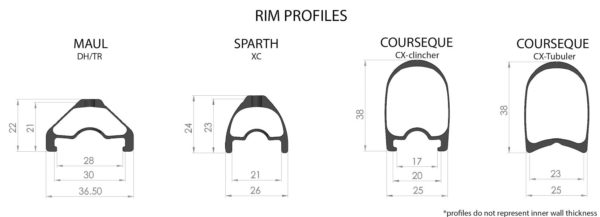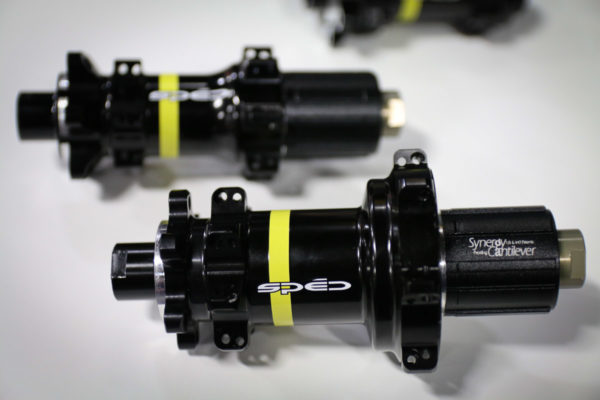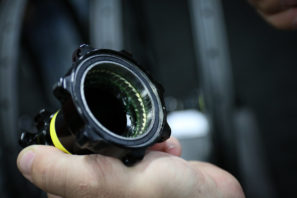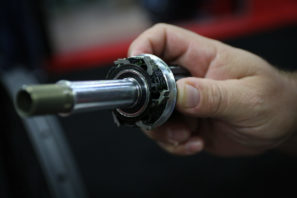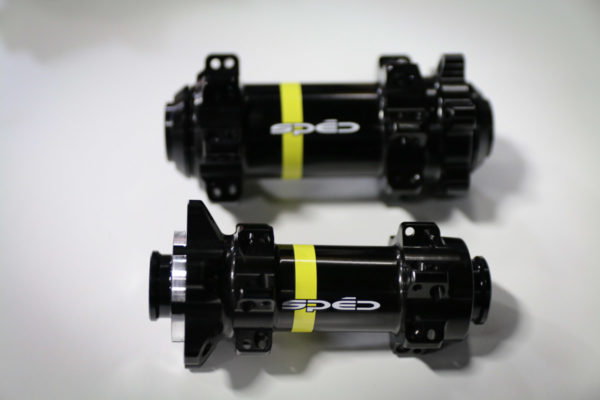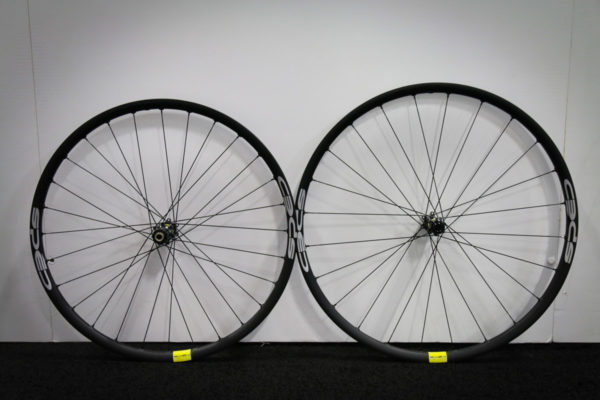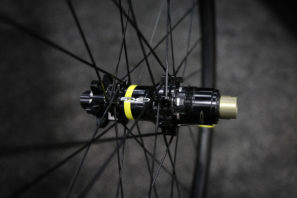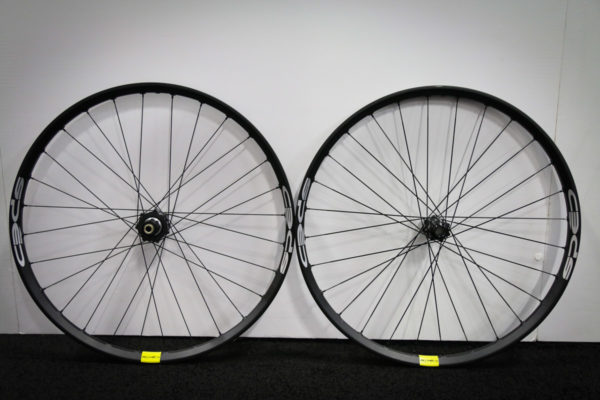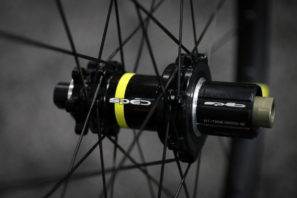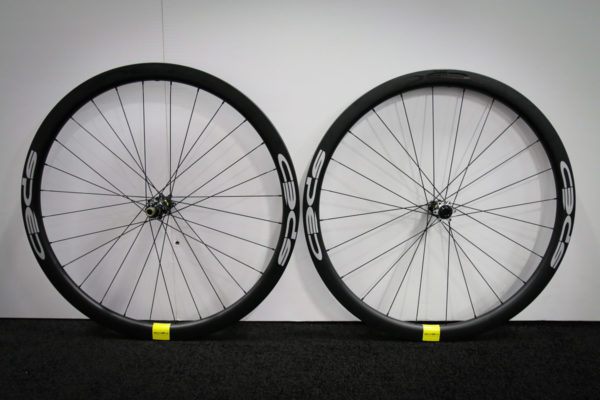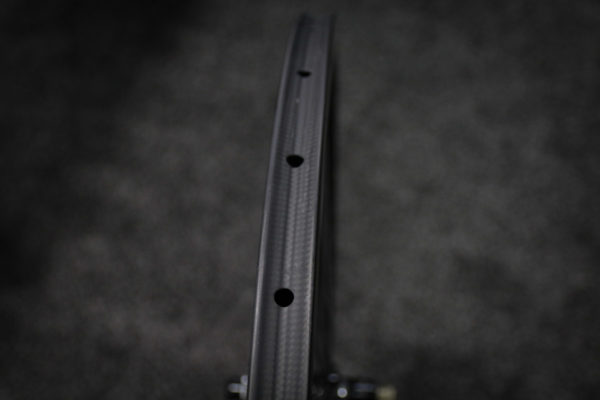After a number of teases earlier this year, SPĒD Precision finally unveiled their full production line at Interbike. Saying finally probably isn’t fair considering that the company has materialized fairly quickly, a testament to founder Colin Esquibel’s previous experience in the bike industry. Most recently serving as the Director of Product Development and MTB brand manager for Box Components and Promax, when Colin told us he had a new wheel project in the works we were excited to see what he would come up with.
After seeing the wheels for the first time in Vegas, it looks like they’re worth the wait – well built, well spec’ed carbon wheels with reasonable pricing…
Jumping right into the deep end, all of SPĒD Precision’s wheels focus on the performance end of the spectrum and feature carbon fiber rims. Using their own molds and designs, each rim was developed for a specific purpose which is why you’ll find differences like hooked vs. hookless rim profiles through the line. All of the mountain bike rims use a low profile which is said to provide better vertical compliance as well as more leeway with where you put the carbon from a design perspective. the SPĒD rims use Optimal External Material Placement with directional nipple extrusions and directional spoke drilling to create the strongest rim possible with the least material and weight.
Only the SPĒD Precision Sparth XC rims use a hookless construction while the Maul DH/Trail and Courseque CX clincher both keep the hooks. Why? Colin points out that molding hooks in a carbon rim is harder and more expensive, but in the end they hold the tire better than hookless designs. On rims that experience high cornering loads like DH, Trail, and CX, he felt it was important to keep the hook. The Sparth XC is an “unapologetically light” XC rim that won’t see the side loading that the DH rim will see, so it can get away with a hookless design.
Along with their own rims, SPĒD Precision is building the wheels with their own straight pull hubs in two different versions. Each uses a quad bearing rear hub design that places the freehub bearing out as far as possible and uses a massive bearing for the Trail/DH hub which is twice the diameter of the light weight hub. Both are easily serviceable and the lighter hubs will use a 4 pawl system with a 28 tooth ratchet ring for CX and XC while the Trail and DH wheels use a more stout hub that gains a 6 pawl/46 tooth engagement system. The XC and CX wheels use 24/28 spokes front/rear, and the Trail and DH wheels see 28 on each end with bladed HT spokes. Freehub bodies are available in Shimano or SRAM XD.
For XC use, SPĒD offers the Sparth which uses a 21mm internal width hookless carbon rim that is available in 27.5 or 29″ with the same dimensions. Their lightest MTB wheel, the Sparth XC comes in at 1370g for the 27.5″ version with a tubeless ready rim. Offered in Boost and non-Boost hub spacings, the Sparth wheelset will run $1575. If you’re wondering about durability, Colin points out that Rebecca Gross won the Breck Epic earlier this year on a set of SPĒD Precision Sparths while also putting the CX wheels through the wringer as well.
On the Trail/DH side of things, the Maul Trail and Maul DH actually use the same rim profiles, but see different layups to match the discipline. Available 27.5″ only, the 28mm internal width hooked carbon rims are paired with Boost or non-Boost hubs for the Trail wheel, and only 110x20mm front and 150/157x12mm rear for the DH wheel. With claimed weights of 1775g (trail) and 1975g (DH), the wheels will run $1750 for Trail and $1900 for DH.
Last, the Courseque CX uses a completely different rim shape that is offered in tubeless clincher or tubular. Measuring 38mm tall, the tubular is 25mm wide at the very edge while the clincher is 17mm internal with a 25mm external measurement. Built with the lighter hub option, the wheels will fit 100×12 or 15mm front and 142×12 rear thru axles, and have a claimed weight of 1485g and a retail price of $1550. All of the wheel should be available this December.
